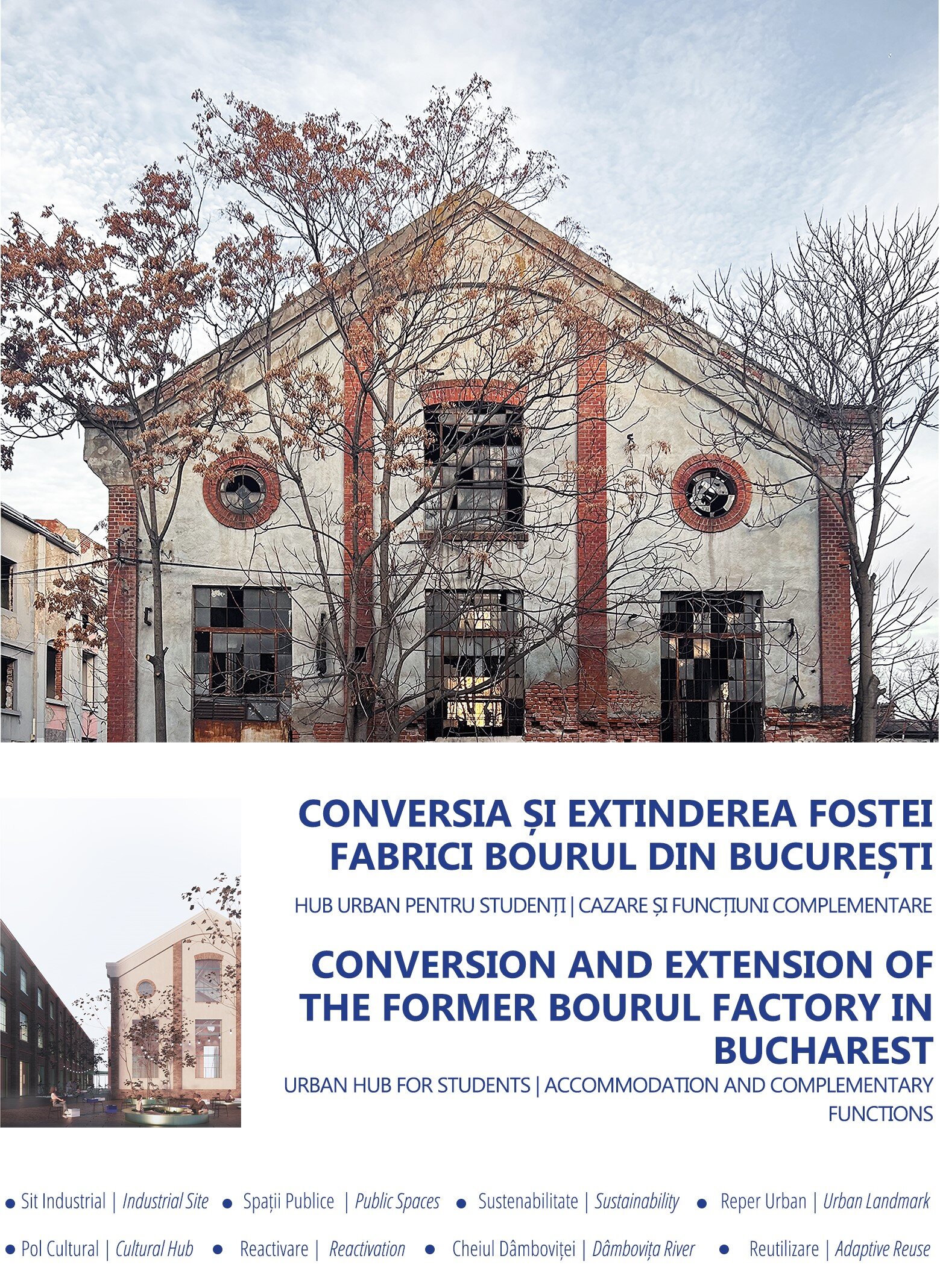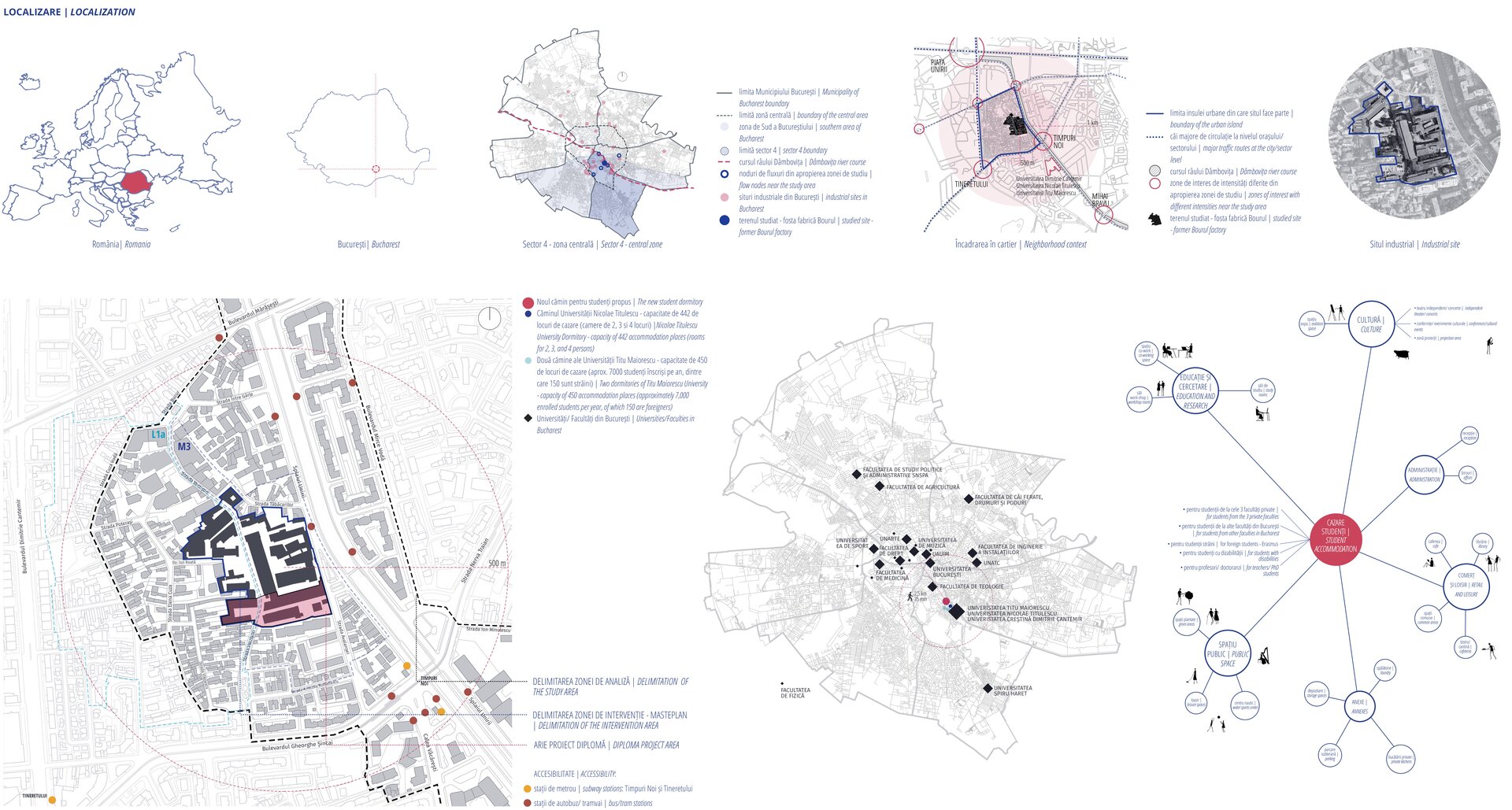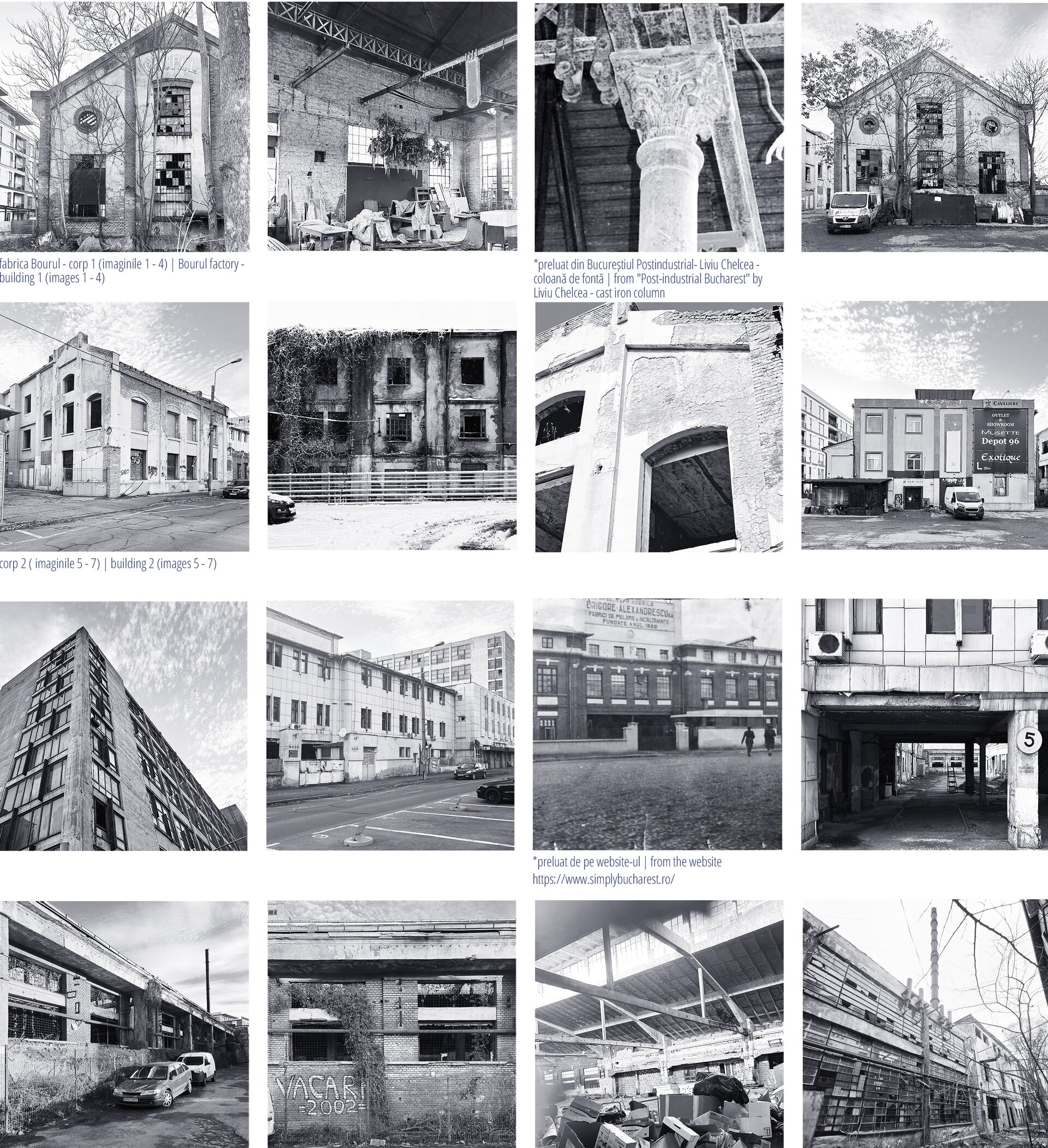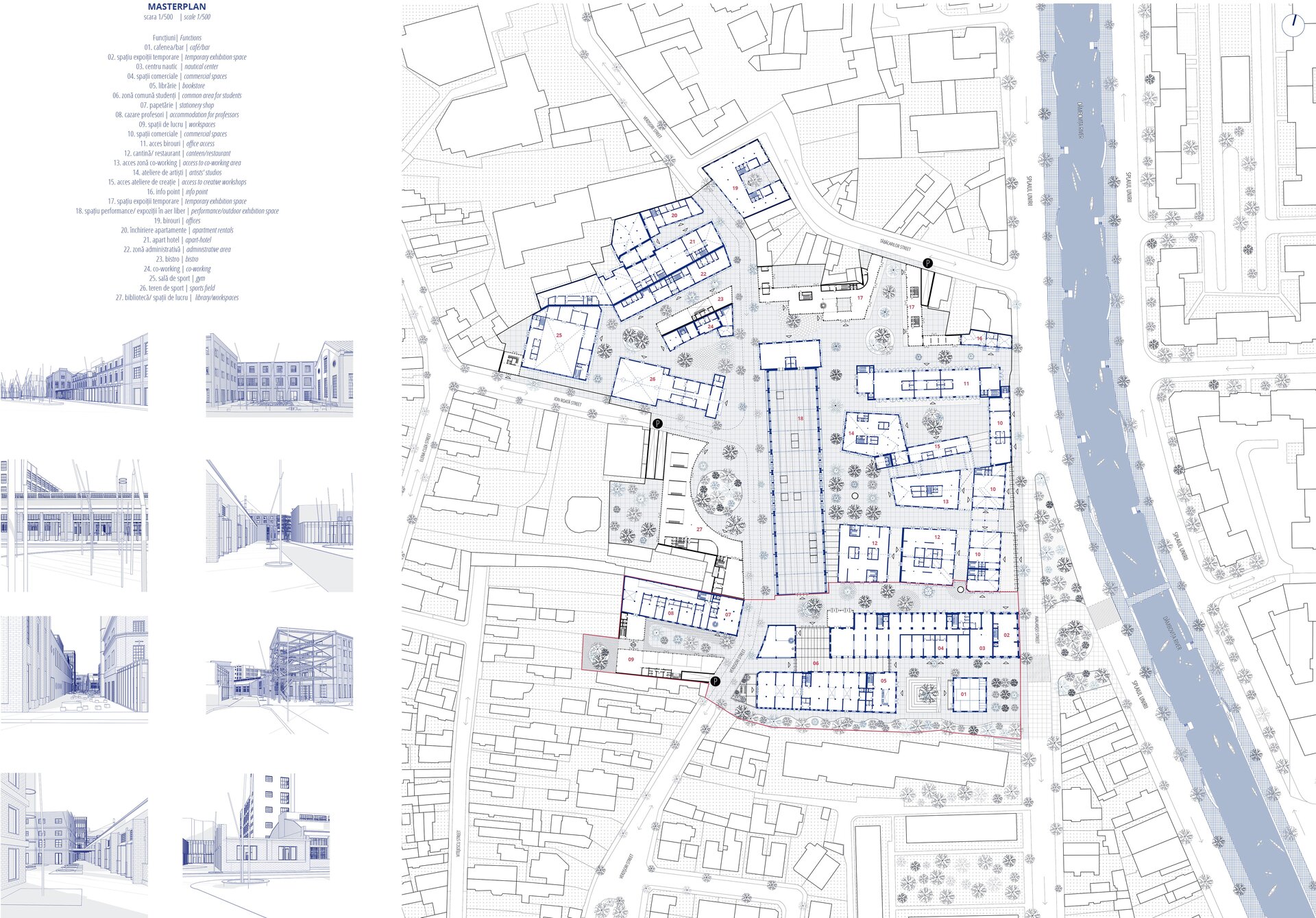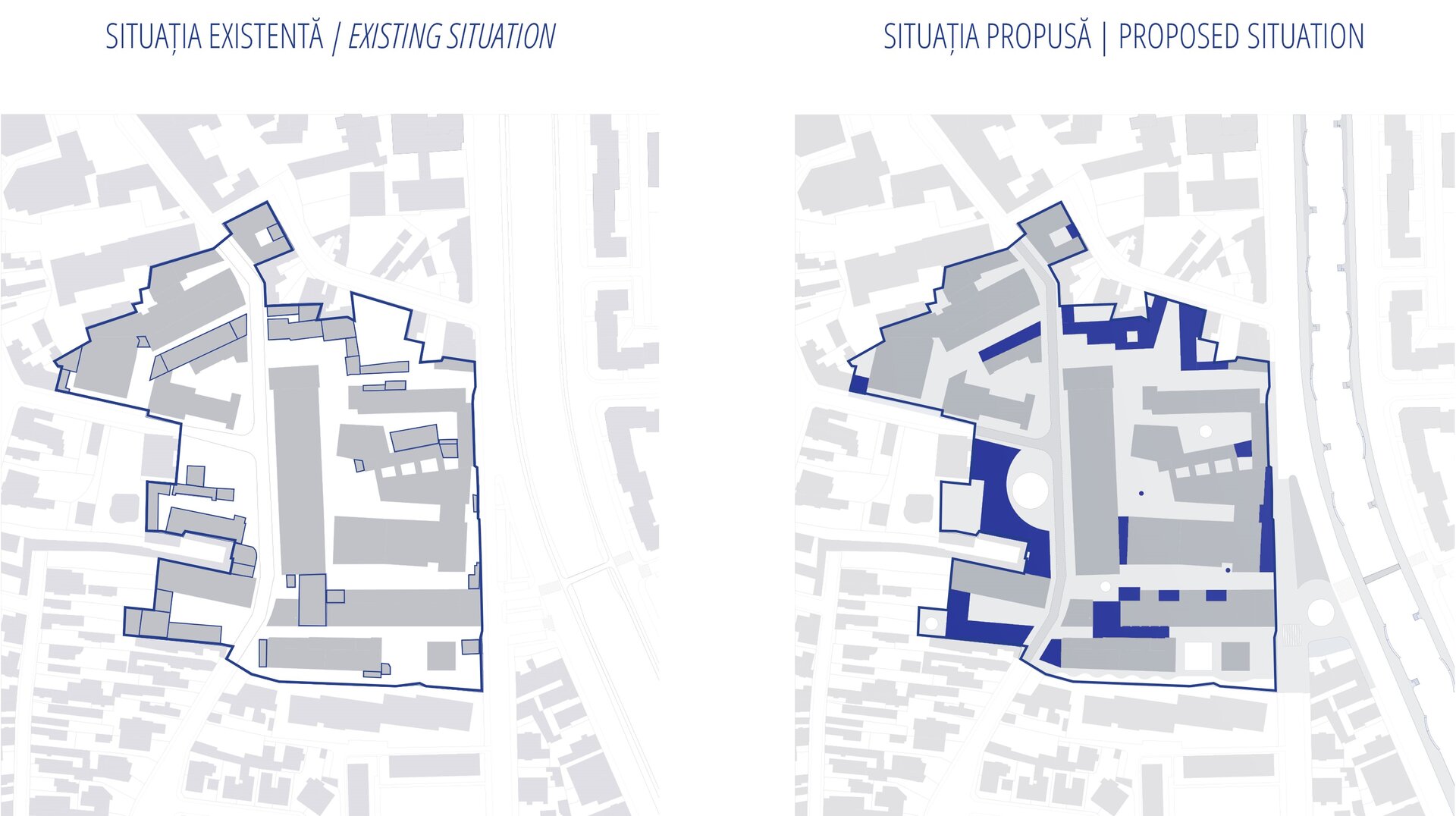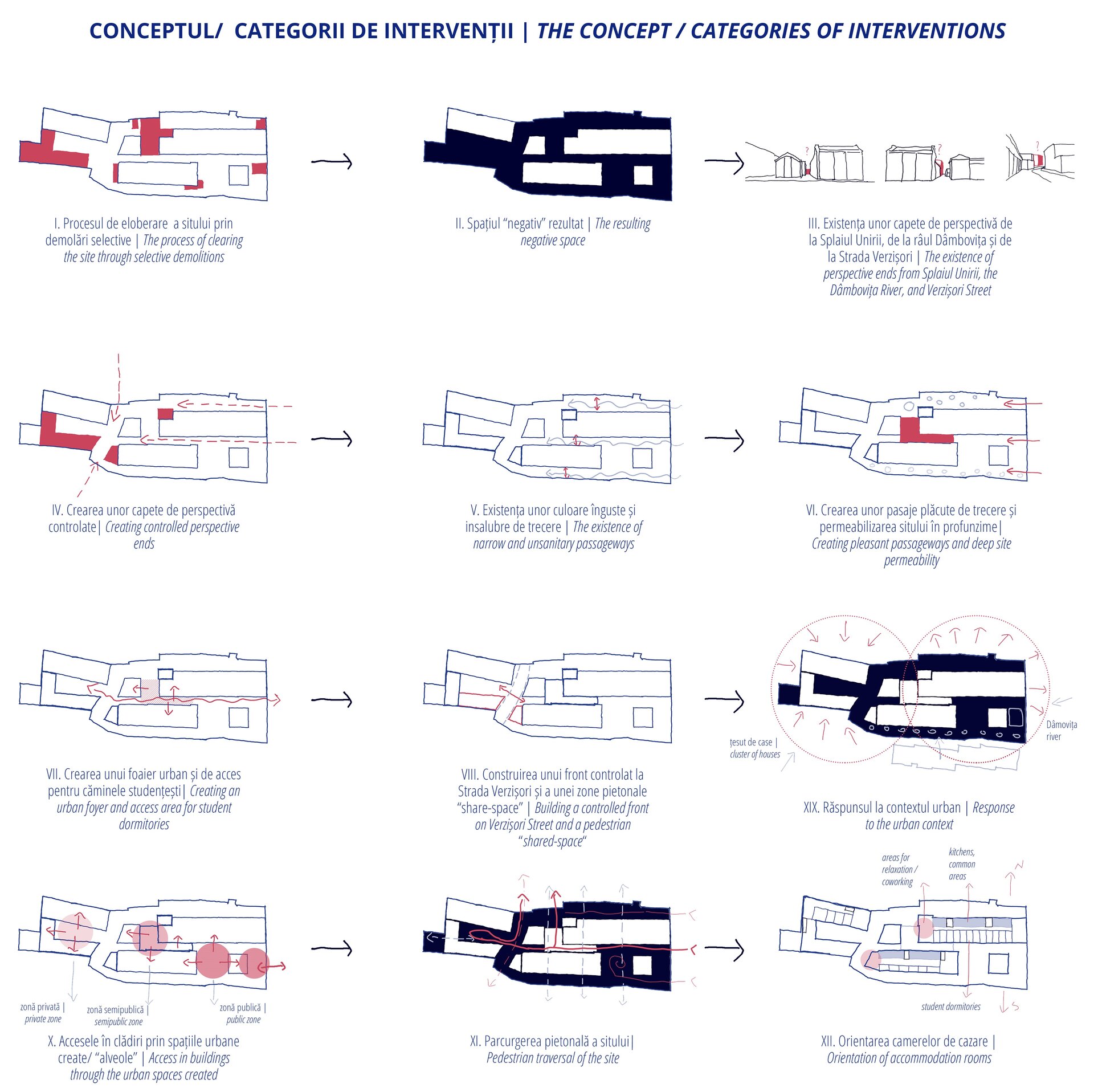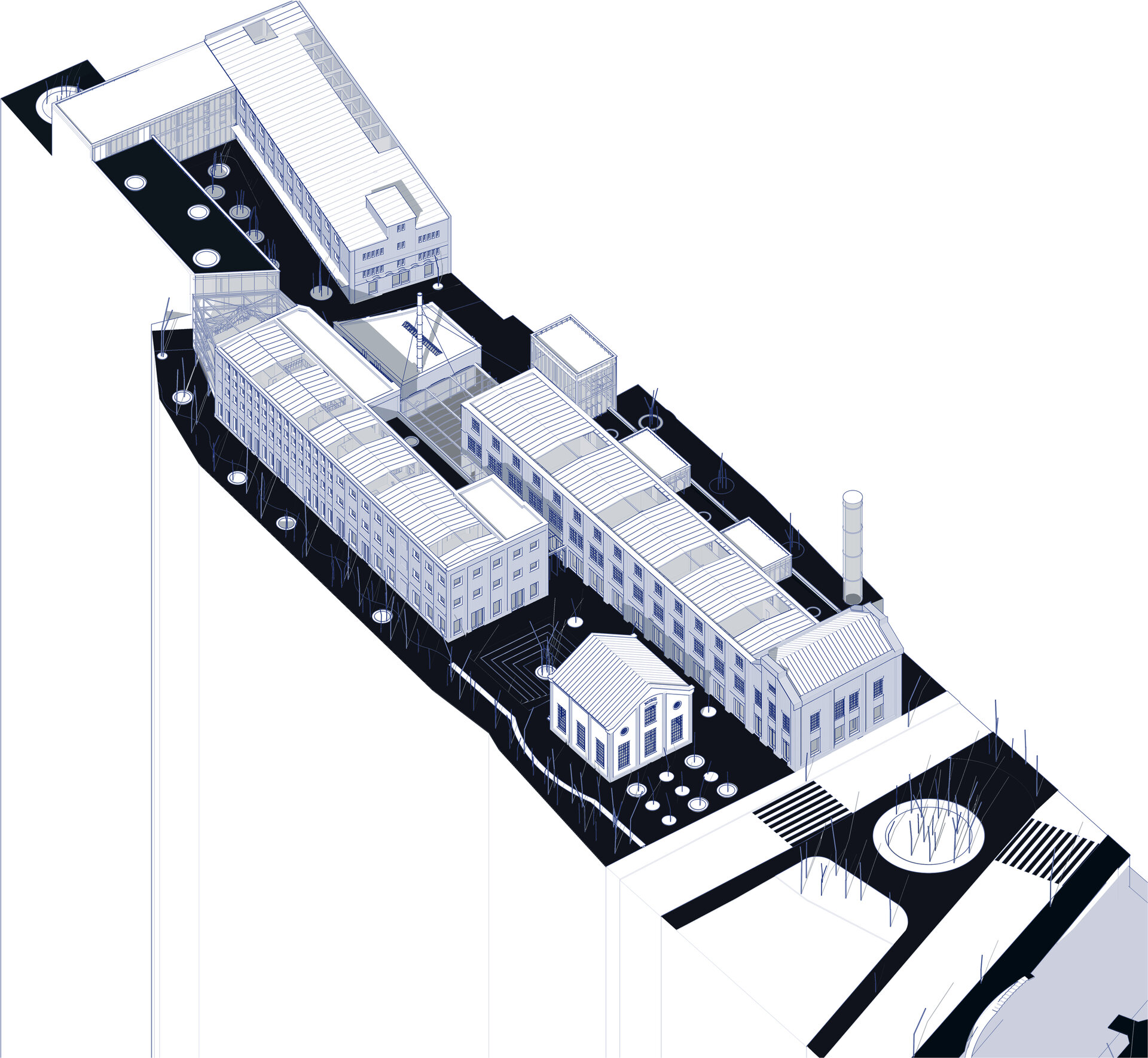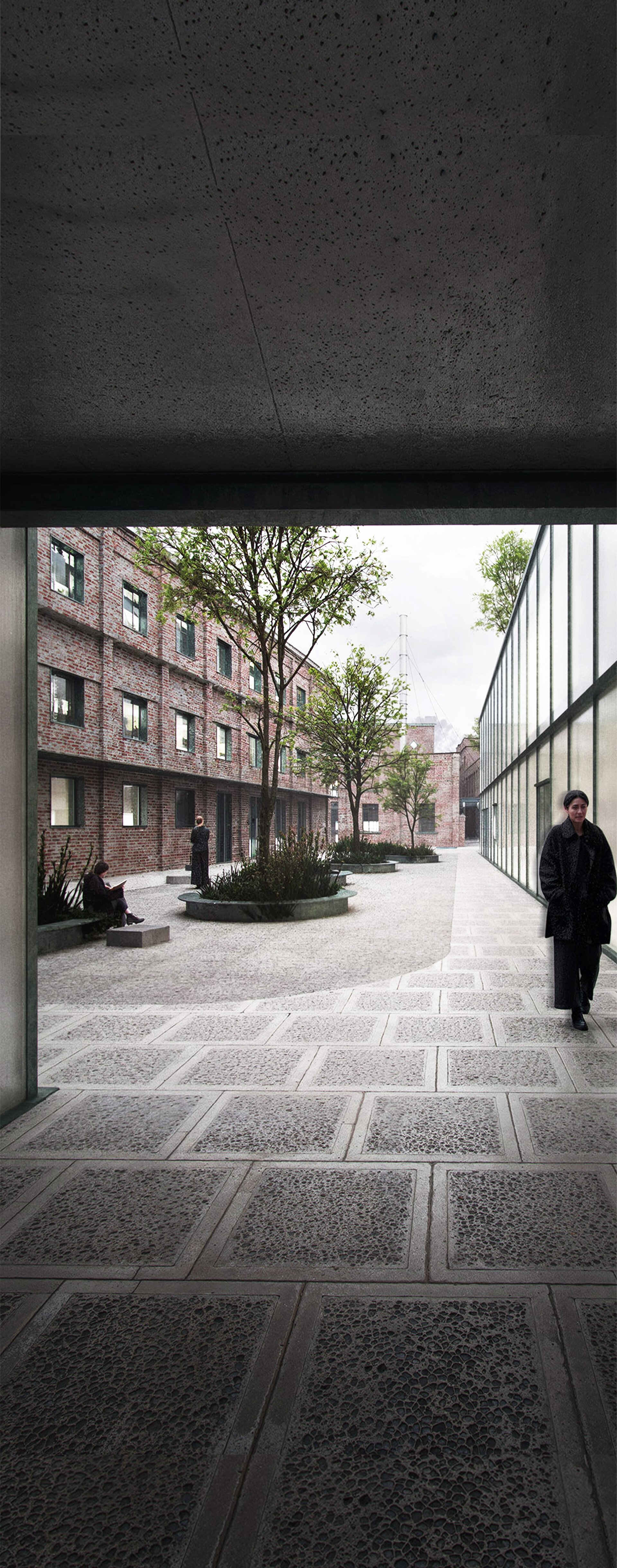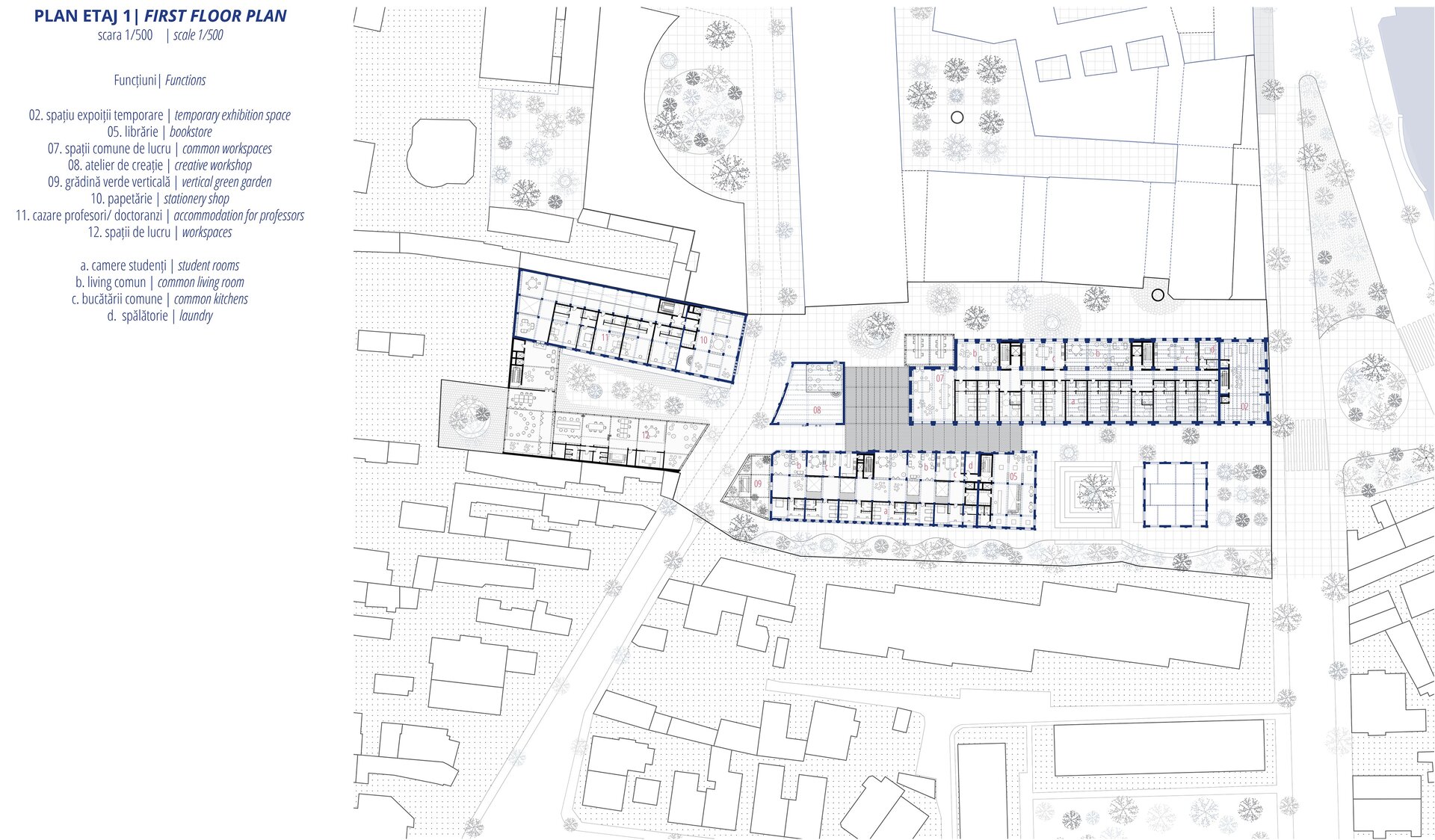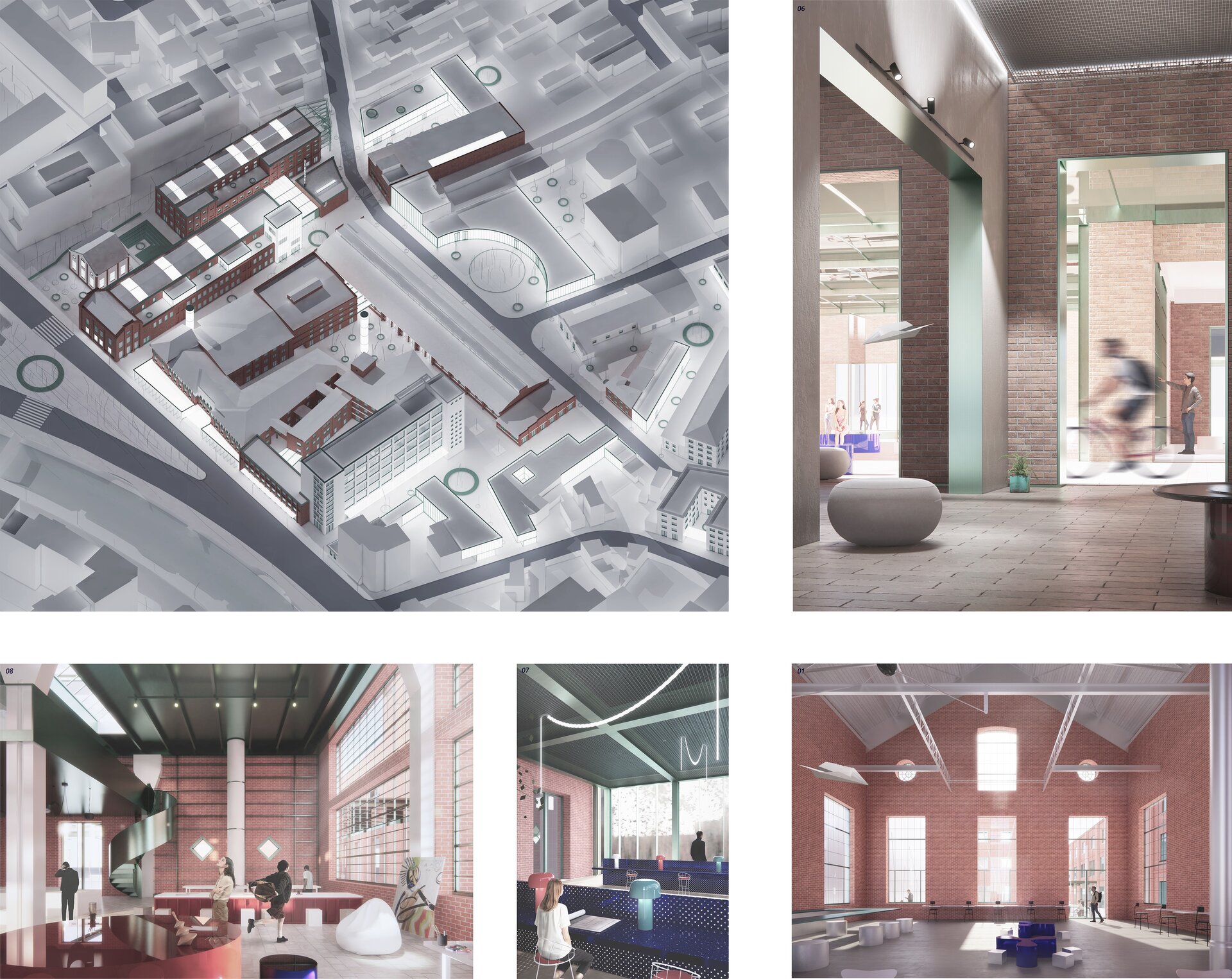
- Prize of the “Research through Architecture / Architecture Diplomas” section (ex aequo)
Conversion and extension of the former Bourul Factory in Bucharest. Urban Hub for students
Authors’ Comment
"The existing built structures must always be reused first." This idea was emphasized in the design principles at the UIA World Congress of Architects, held in Copenhagen in 2023, where the necessity of making urgent decisions to reduce the negative impact of waste production in the construction industry was discussed. In the current context of concerns related to reducing the carbon footprint and efficiently using resources, the recognition of the importance of converting existing structures is becoming increasingly present in the collective consciousness.
It is possible that the preservation of built heritage, including industrial heritage, may come more from ecological (pollution combat) and economic efficiency reasons, to which all humanity is sensitive, rather than cultural-identity reasons, to which only specialists in the field and a few others are currently sensitive. In Romania, particularly in Bucharest, there are many valuable abandoned industrial areas that could be recovered and converted into functional spaces. This project aligns with these concerns, applied to the industrial site of the former Bourul Tannery, which is currently partially abandoned, with many historical buildings in a state of collapse. Constructions from the pre-war period (the first buildings appearing from 1877), the interwar period, and the socialist period make this site quite complex and special, as it contains the entire evolution of Bucharest's industrial architecture in one place. Thus, in the new urban hub, accommodation units with a capacity of 70 students and 20 foreign professors are proposed, along with other complementary leisure functions such as cafes, exhibition, cultural and commercial spaces, artist studios, co-working zones, offices, accommodation, and a nautical center aimed at revitalizing the Dâmbovița River.
The main action was to open the site in its depth - to pedestrians and in relation to the river - through minimal interventions (demolition/construction), as reversible extensions as possible, or through breakthroughs in the built fabric. Through these site revitalization actions, the Bucharest public could be brought closer to the fragile industrial architecture at minimal costs, in a sustainable manner, while maintaining as much of the authenticity of the industrial site as possible.
The conversion project aims to reuse an existing resource, the abandoned industrial heritage in a state of collapse, which could represent a new cultural, social, and economic hub that Bucharest needs in the future.
- Conversion and extension of the former Bourul Factory in Bucharest. Urban Hub for students
- Reimagining the Leonida Garages - Contemporary Cultural Space Bucharest
- Lost Bucharest Museum
- Recovery of Callimachi-Văcărescu ensemble. Cultural and touristic circuit at Mănești, Prahova
- Memorial Museum of Bucharest Pogrom
- ICA - Institute of Cinematographic Arts (in Timisoara)
- Landscape habitat: Extension and conversion of the former imperial baths of Herculane
- Constanța History and Archeology Museum the New Gallery
- Extension of the Independence Cinema with a Film and Media Faculty, Târgoviște
- Agricultural Research Center in Cluj
- City and Community - Youth Community Center on Dacia Boulevard, Bucharest
- “George Coșbuc” Flower Market - Rehabilitation and Expansion
- “Baba Novac” neighborhood center - Rehabilitation of the “Rucăr” commercial complex in Balta Albă, Bucharest
- Medresa, cultural center for Medgidia’s turkish-tatar community. Reintegrating the turkish bath into the urban circuit
- Workspaces for Creative Industries. Christo Gheorgief House
- Day-Care Centre. Nifon Mitropolitul House
- Archaeology Center in the Constanța Peninsula
- Tab. Socio-cultural Incubator. Conversion of the Bucovat Tannery, Dolj
- Community Center, Ferentari
- Art school for children
- Recomposing a lost urbanity. Cultural intervention in the Historical Center of Brăila, Romania
- Factory, School, Campus. Vocational School on the Abandoned Drajna Timber Factory Site, Măneciu County
- Interactive music center
- Catechesis center on Biserica Amzei street, Bucharest
- Center of creation and contemporary culture
- Cultural center - Extension of the “Radu Stanca” National Theater in Sibiu
- Bolta Florești - Community Ensemble
- Digital Fabrication Laboratories. Adaptive reuse of the “Ciocanul” Trade School, Bucharest
- The conversion of the chapel within the former noble estate of the Csávossy family, Bobda
- The house with ogives
- Cultural Forum in Brăila
- Sportul Studențesc Palaestra
- Forest of Arts - Cultural Center & Artist Residencies Timișoara
- Transformation and durability: Red Sand Fort, intervention in the Thames Estuary
- Danube waterfront reimagined. Restoration and conversion of the former shipyard of Drobeta-Turnu Severin, RO
- Revitalization of the Neculescu Inn
- Creative and Research Hub “Unfinished Section Studio”
- Vocational School in Brasov
- Extension of the Pomiculture Research and Development Centre in Băneasa, Bucharest
- Arts and Science Park, Splaiul Unirii Bd.162, Bucharest
- Behind the apartment blocks. Urban reweaving. The Theodor Sperantia Neighbourhood
- The House of the Romanian Academy - From Object to urban fabric
- Chisinau Museum of Modern and Contemporary Art
